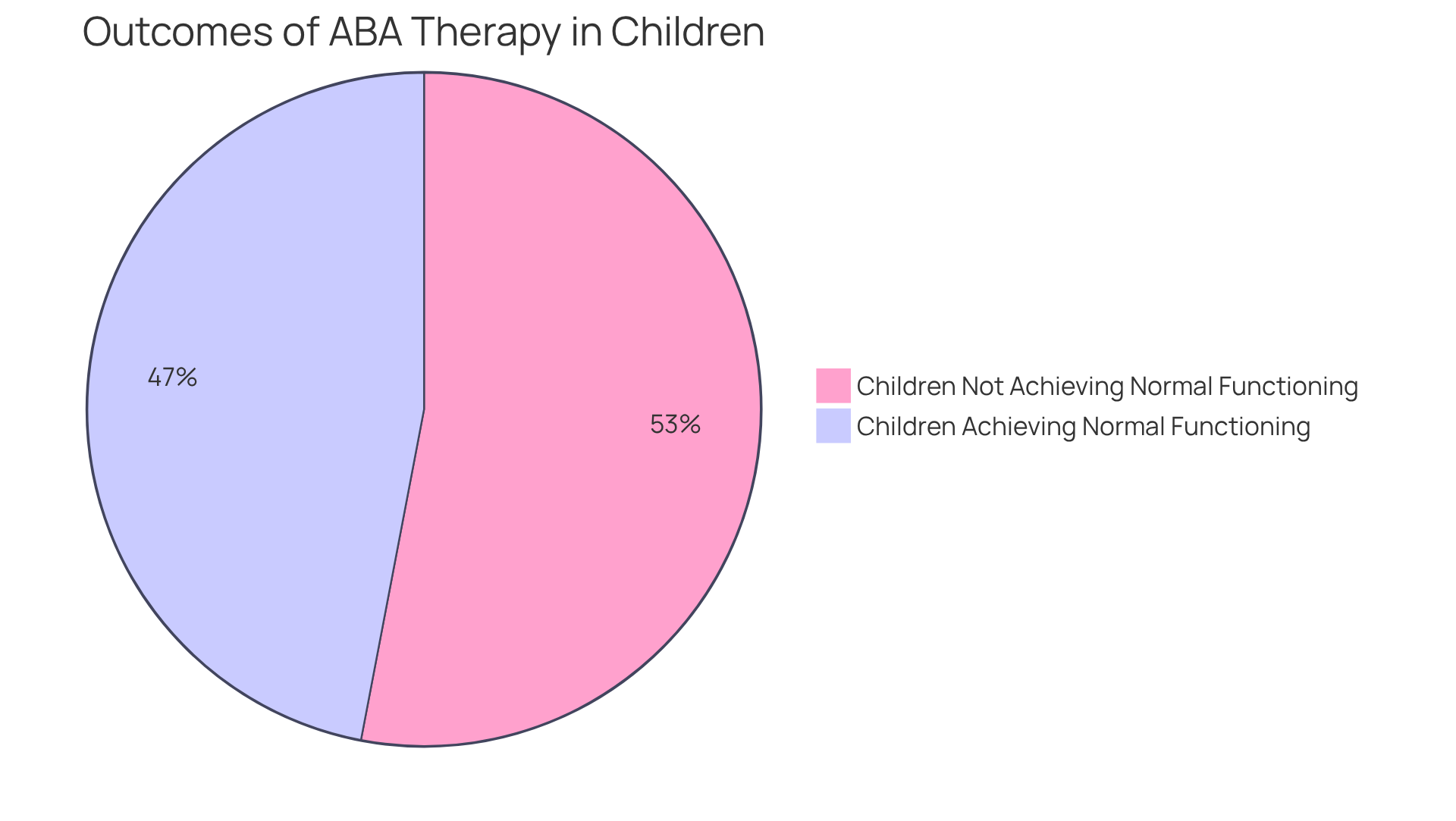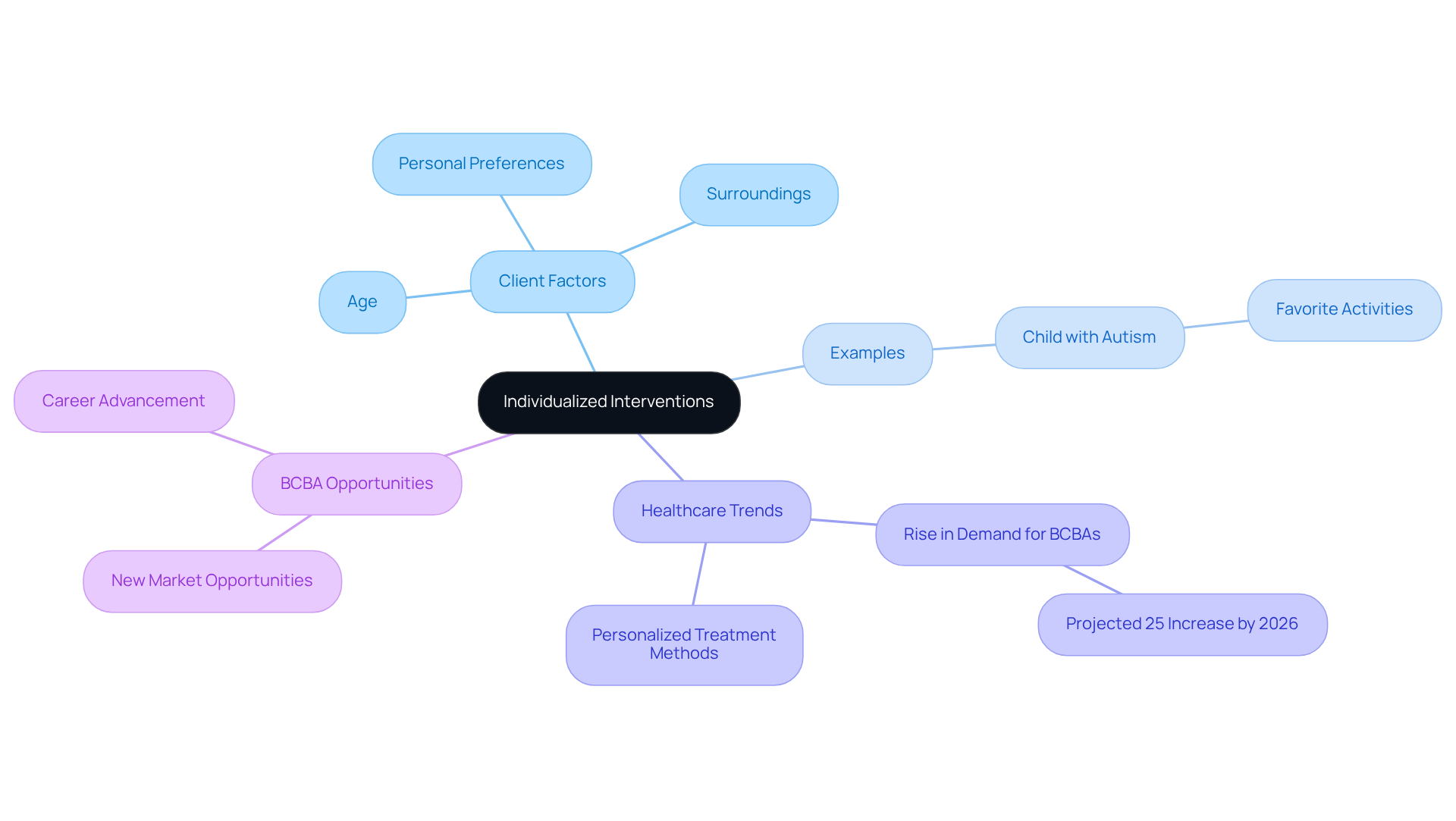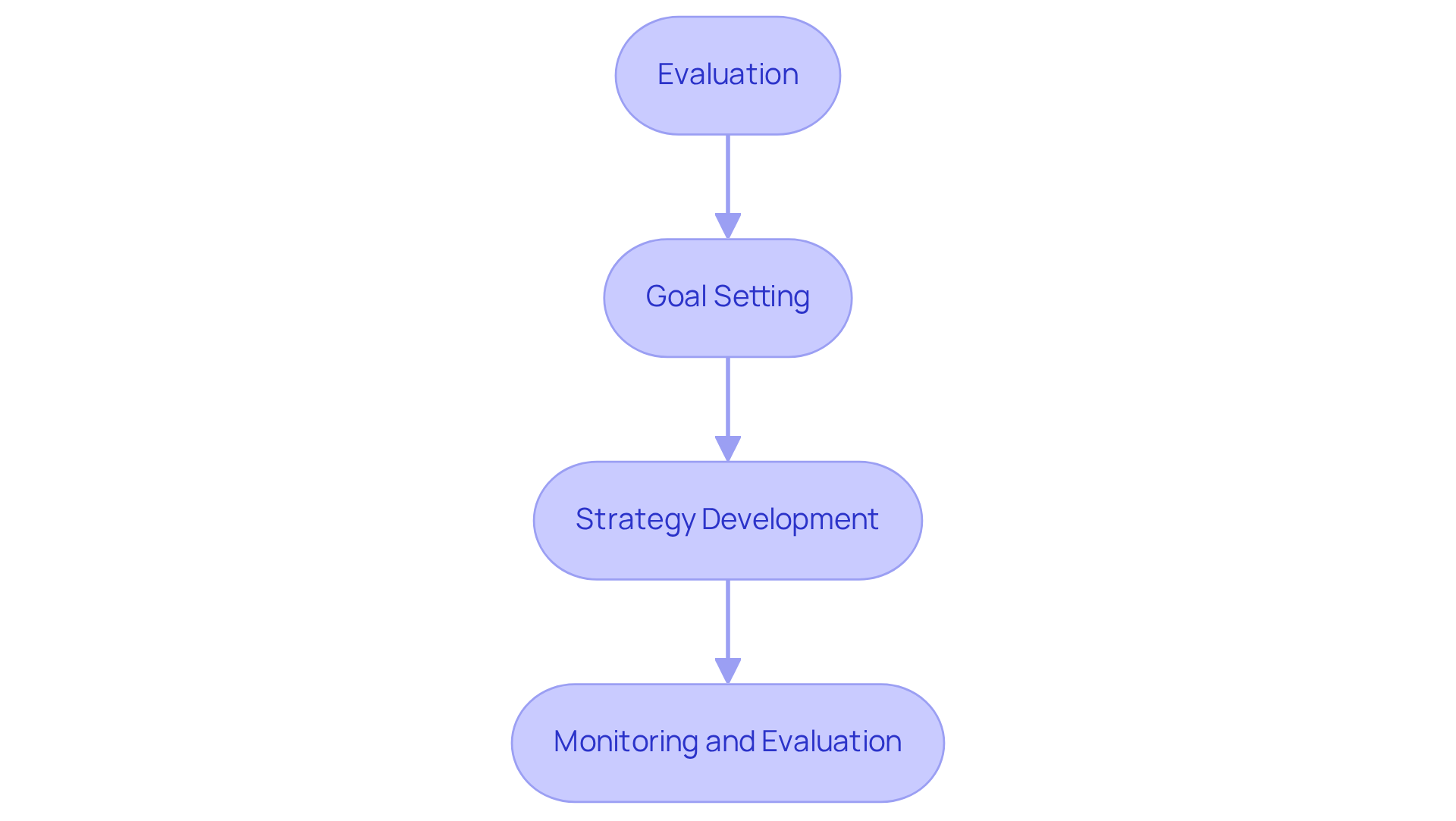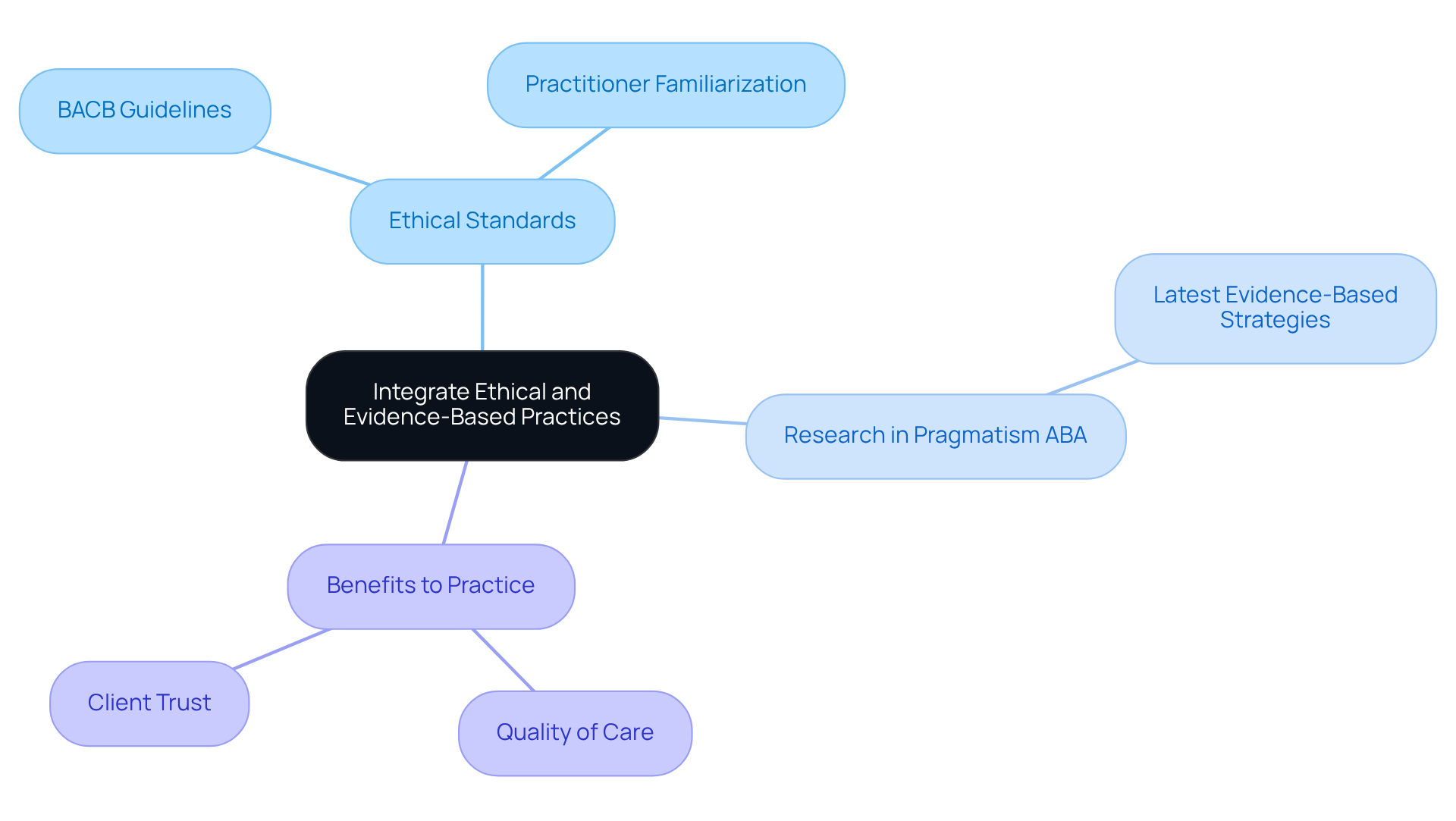June 29, 2025

The article emphasizes the critical role of pragmatism in Applied Behavior Analysis (ABA) therapy, capturing attention by underscoring the demand for individualized strategies that significantly enhance therapy effectiveness. Evidence supports the notion that personalized approaches lead to remarkable improvements in communication and daily living skills for individuals with autism. This demonstrates the practical benefits of tailoring interventions to meet each client's unique needs.
As healthcare employers, have you considered how such tailored strategies could address the specific challenges faced in your hiring processes? By focusing on the individual needs of clients, we can ensure that interventions are not only effective but also relevant.
The call to action is clear: embracing a pragmatic approach in ABA therapy is essential for fostering meaningful progress and achieving desired outcomes.
Pragmatism in Applied Behavior Analysis (ABA) therapy stands as a transformative approach that prioritizes real-world effectiveness over rigid theoretical frameworks. This method focuses on individualized strategies, allowing practitioners to tailor interventions to meet the unique needs of each client, thereby enhancing their quality of life.
With the demand for personalized therapy on the rise, how can behavior analysts effectively implement these pragmatic strategies to ensure meaningful outcomes? This article explores the principles of pragmatism in ABA, offering insights into crafting impactful, individualized treatment plans that foster independence and well-being for those facing behavioral challenges.
Pragmatism ABA therapy embodies a practical method that prioritizes outcomes and effectiveness in treatment. This philosophy drives practitioners to implement strategies yielding quantifiable results for clients, rather than adhering strictly to theoretical frameworks. In ABA, where the primary aim is to improve the quality of life for individuals with behavioral challenges, pragmatism ABA is indispensable.
Research indicates that early and intensive ABA programs can lead to significant improvements in communication and daily living skills, with combined effect sizes of:
Moreover, findings reveal that 47% of children involved in the UCLA Young Autism Project treatment achieved normal intellectual and educational functioning, compared to a mere 2% in a control group, underscoring the tangible advantages of using pragmatism ABA.
By embracing pragmatism ABA, practitioners can tailor their methods to meet the unique needs of each client, ensuring that support remains relevant and effective. This focus on personalized strategies not only enhances the efficacy of interventions but also aligns with the overarching goal of (ASD).
Furthermore, continuous data collection is essential in ABA practices for assessing the effectiveness of strategies and monitoring progress, thereby reinforcing the empirical foundation of pragmatism ABA.

The demand for (BCBAs) is projected to rise by 25% by 2026, which highlights the critical need for personalized approaches within the framework of pragmatism ABA. These approaches are essential as they address the unique requirements, preferences, and situations of each client. Comprehensive assessments initiate this process, identifying individual challenges and strengths. This allows practitioners to develop tailored strategies that align with specific goals. Factors such as age, surroundings, and personal preferences significantly shape these initiatives.
Consider a child with autism: they may thrive with communication strategies that incorporate their favorite activities, thereby enhancing engagement and motivation. Research indicates that children receiving ABA treatment before age five show marked improvements in communication, social skills, and adaptive behaviors. By prioritizing individualized strategies, therapists can cultivate a more engaging therapeutic environment, leading to effective and meaningful outcomes.
Current trends in healthcare underscore the significance of personalized treatment methods. Evidence suggests that customized interventions dramatically enhance the effectiveness of practices grounded in pragmatism ABA. As the landscape evolves, the ability to develop tailored strategies will not only meet the diverse needs of individuals but also position BCBAs for new career opportunities and advancement in a thriving market.
Are you facing challenges in hiring qualified professionals? Consider how Hire ABA can streamline your recruitment process and connect you with the right talent. Embrace the future of ABA with confidence.

To implement pragmatic strategies in ABA therapy, practitioners should follow a structured approach:
By adhering to these organized steps, practitioners can enhance the effectiveness of their practice through pragmatism aba, ultimately leading to improved outcomes for clients. The incorporation of systematic assessments and ongoing evaluations is backed by evidence indicating that children involved in consistent ABA practices experience greater independence and enhancements in quality of life.

Integrating ethical and evidence-based practices in therapy is essential, especially within the framework of pragmatism aba. Adhering to established guidelines and utilizing scientifically validated interventions is crucial for practitioners.
To ensure alignment with these principles, it is imperative that practitioners familiarize themselves with the set forth by the Behavior Analyst Certification Board (BACB). Are you aware of how these standards can elevate your practice?
Furthermore, staying informed about the latest research in pragmatism aba enables practitioners to implement evidence-based strategies that have shown effectiveness. This commitment not only enhances the quality of care provided to clients but also fosters trust and credibility within the therapeutic relationship.
By prioritizing ethical and evidence-based practices, practitioners can significantly improve their professional standing and client outcomes.

Pragmatism in ABA therapy serves as a vital framework that emphasizes practical outcomes and individualized strategies tailored to meet the unique needs of each client. By prioritizing effective interventions grounded in empirical evidence, practitioners can significantly enhance the quality of life for individuals facing behavioral challenges, particularly those with autism spectrum disorder. This practical approach not only fosters independence but also aligns therapeutic practices with the overarching goal of meaningful improvement.
The article highlights several key aspects of pragmatism in ABA, including:
Comprehensive evaluations and flexible goal-setting are essential for developing tailored strategies that resonate with clients, leading to more engaging and effective therapy sessions. Additionally, continuous monitoring and data collection reinforce the efficacy of interventions, ensuring that practitioners can adapt their methods in response to clients' evolving needs.
Ultimately, embracing pragmatism in ABA is not merely about adhering to established practices; it is about fostering a therapeutic environment that is responsive, ethical, and effective. As the demand for personalized treatment continues to rise, practitioners are called to innovate and refine their approaches, ensuring that they remain at the forefront of ABA therapy. By doing so, they can not only improve client outcomes but also contribute to the broader discourse on effective and ethical practices in the field.
What is pragmatism in ABA therapy?
Pragmatism in ABA therapy is a practical approach that prioritizes outcomes and effectiveness in treatment, focusing on strategies that yield quantifiable results for clients rather than strictly adhering to theoretical frameworks.
Why is pragmatism important in ABA therapy?
Pragmatism is important in ABA therapy because it helps improve the quality of life for individuals with behavioral challenges by allowing practitioners to tailor their methods to meet the unique needs of each client.
What are the benefits of early and intensive ABA programs?
Research shows that early and intensive ABA programs can lead to significant improvements in communication and daily living skills, with effect sizes of 1.47 for expressive language and 1.48 for receptive language advancement.
How effective is pragmatism ABA based on research findings?
Findings indicate that 47% of children involved in the UCLA Young Autism Project treatment achieved normal intellectual and educational functioning, compared to only 2% in a control group, highlighting the tangible advantages of pragmatism ABA.
How does pragmatism ABA enhance intervention efficacy?
By embracing pragmatism ABA, practitioners can personalize their strategies, ensuring that support remains relevant and effective, ultimately fostering independence and improving overall well-being for individuals with autism spectrum disorder (ASD).
Why is continuous data collection important in ABA practices?
Continuous data collection is essential in ABA practices for assessing the effectiveness of strategies and monitoring progress, which reinforces the empirical foundation of pragmatism ABA.
Our expert recruitment strategies and AI-driven sourcing ensure that you receive top-notch candidates quickly, without compromising on quality. Whether you’re looking for BCBAs, Clinical Directors, or RBTs, we’ve got you covered.